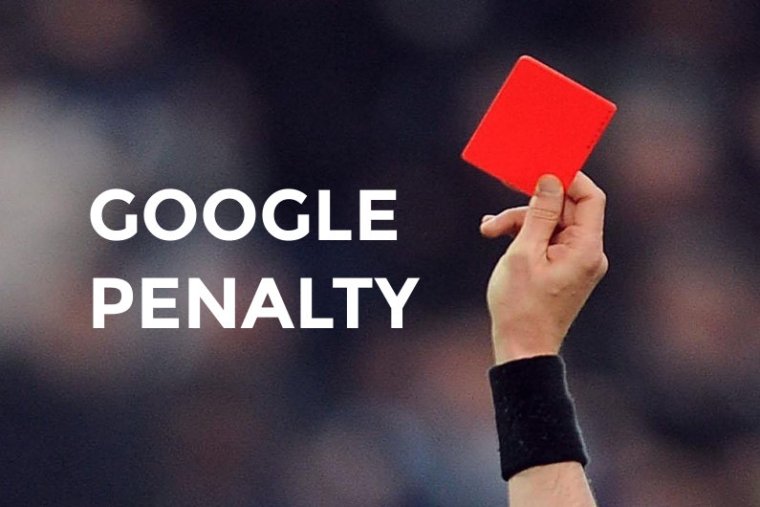While having and running your website on the Internet, you must have heard of something like a Google penalty. It?s the negative impact on a website?s search rankings due to its violation against Google?s webmaster guidelines. The penalty can be imposed both manually and algorithmically. It results in the fall of rankings for every page for a specific keyword, or a specific page, which in turn leads to the decreased traffic for this particular site. In the result, you can?t search for this page in the web search engine so easily as before.?
Websites are usually penalised for a variety of reasons. Among the most common, there are automatically generated content, hidden texts or links, irrelevant keywords, viruses, and many others. To fight with such problems, website owners use many tools, like Google Webmaster Tools, Google updates or other sites, for example, the Pro rank tracker.?
Types of Google penalties
Generally, you can distinguish two types of Google penalties, namely manual actions and algorithmic devaluation. How do they differ? The first sort of penalty is applied to your site by a Google worker who looks at your website, evaluates its content and dampens your visibility in the search engine if needed. Depending on the scale of your violation, you can be either exposed to a small drop in the rankings or wholly removed from the search results. So, next time you post something on your website, watch out what kind of content you want to share.?
The other type of penalty is an algorithm update, such as Google Penguin, which tries to detect all low-quality backlinks used on the Internet to promote some companies. This so-called ?link spam? is also against Google?s terms and conditions since it doesn?t contribute anything new and valuable, but only clutters sites with nonsensical texts. However, some SEO professionals don?t treat algorithm changes as a penalty since they assert that algorithms can both cause the devaluation of websites, and their growth in the rankings.?
How to identify them
Having already some general background of Google penalties, you may wonder how to identify them. It turns out not to be so difficult. To find both Google penalties, you can observe the traffic on your page. If it seems to be reduced in comparison to previous months, it?s the first sign that something is going wrong. Also, Google should inform you via Google Search Console if they impose any manual action on your page. However, to find out about it, you must possess such search console set since not everyone decides to install it. However, it?s quite useful to detect the safety of your website when you aren?t so sure about it. All manual actions are displayed on Google?s support page so that you could familiarise yourself with them, and then fix them.?
Unfortunately, in the case of algorithmic devaluation, Google isn?t as helpful as earlier. They usually claim that there?s nothing to fix, and you can?t usually redress the damage.?
How to fix them?
Fixing a manual action, you need to turn directly to Google. It?s enough to ask the company what you?ve done wrong and how you should solve the problem. Reviewing the issues is the first step you can take, for which Google compensates you. If you properly correct inaccurate content, then you must request removal. In most cases, Google accepts your proposal, though the whole process of regaining reputation can be tough and complicated.?
However, algorithmic devaluation is much more challenging to cope with. The only thing you can do is sit and wait for the algorithm update rerun. There has already been such a situation with Google Penguin with two years? gap between updates when websites couldn?t get back their rankings.?
How to avoid them
Sometimes it also happens that you are not even aware that your webpage is attacked with some spam links, which are the part of a negative SEO attack. Some companies use it to get rid of rivals on the market. As unfair it is, such a phenomenon, unfortunately, exists on a broad scale.?
Then the best what web owners can do is rely on some related websites helping them monitor their rankings. One of such sites is the Pro Rank Tracker, where you can quickly check your keywords, or search in volume and in this way discover whether your website is safe or not. If you notice some links, of unknown origin, probably coming from external sources, you should immediately eradicate them.?
But the most effective preventive method is to regularly monitor your site and the content that is posted and updated. Sometimes, you aren?t the only person in charge of creating it, and something may escape your attention. Therefore, it?s recommended to drop into a habit of checking your website at least once a week. If you notice something suspicious, then you should start worrying.?
Summing up, being an owner of the website, it?s not enough to create the content and promulgate it. It would help if you kept your finger on the pulse regarding the obeying Google?facts?rules so that your page wouldn?t drastically drop in search engine rankings.?


